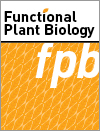FP22244Interaction between UV-B and plant anthocyanins
 , Qunli Ren, Wenxin Zhao, Chengcheng Liao, Qian Wang, Tianhao Ding, Huan Hu and Miao Wang
, Qunli Ren, Wenxin Zhao, Chengcheng Liao, Qian Wang, Tianhao Ding, Huan Hu and Miao Wang
This review focuses on three aspects of the interactions between UV-B and anthocyanin in plants: (1) the light signal transduction pathway of UV-B and its regulation of anthocyanin biosynthesis; (2) the effects of UV-B and other abiotic factors on anthocyanin synthesis; and (3) the protection of anthocyanins against UV-B radiation damage. This laid a foundation for people to use UV-B to interfere with plant production of more anthocyanins.




